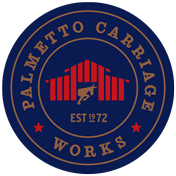Palmetto Carriage Works®
The Sights Of Charleston, SC
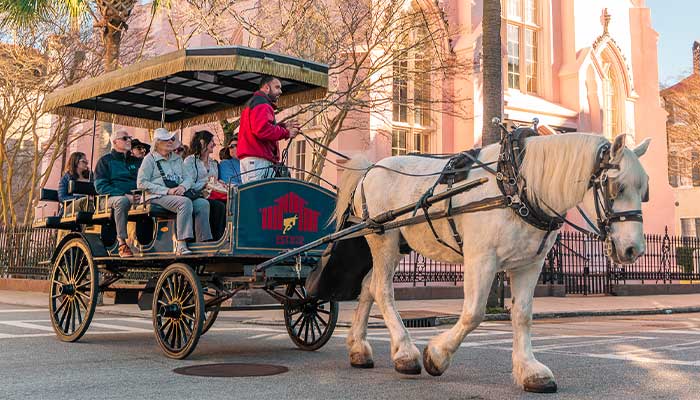
The History of The “Holy City”
During your tour of Charleston, not only do you see the beautiful historic architecture and quaint city streets but you also delve into the vibrant history of the city and learn about areas not normally seen by the average tourist. All of Charleston’s beauty and charm are preserved due to strict preservation laws, and the suburbs of Old Charleston are a remarkable place to hear and witness the ever-unfolding history of the “Holy City.” An ordinance passed in 2018 that doesn’t require city tour guides to be licensed, but we want to keep our tours historically accurate and informative, so all of our guides are licensed through the city to ensure you have the best tour of Charleston. Discover some of the sights you may see and learn about on a ride with us. *Not all sights listed below are guaranteed!*
Discover Your Charleston Tour Stops
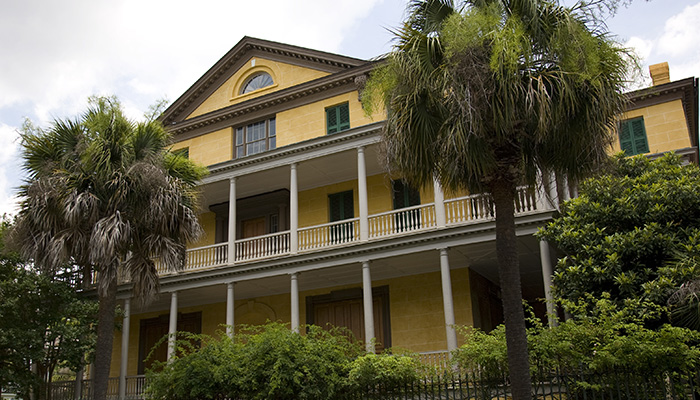
The Aiken-Rhett house is the northernmost site on Charleston’s Museum Mile and is one of the best preserved mansions in the area.
READ MORE
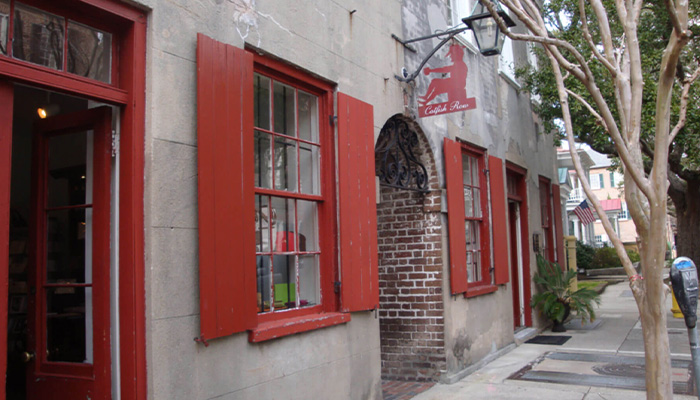
Cabbage Row
18th century architecture abounds here and you won’t be disappointed when your carriage tour travels down Church Street and past some interesting historical structures including a three storied row of houses locally known as Cabbage Row.
READ MORE
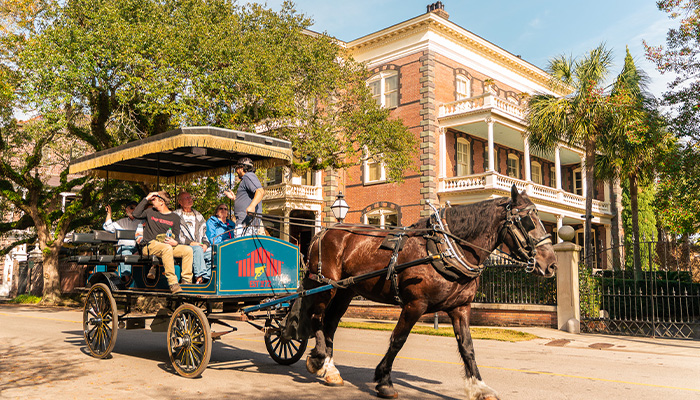
Williams Mansion Formerly Calhoun Mansion
The Williams Mansion is the largest private residence in all of Charleston and may be seen on your carriage tour of this beautiful, historic city.
READ MORE
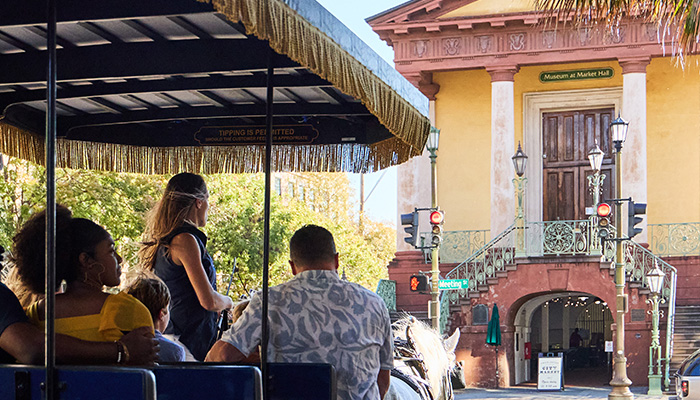
City Market
The City Market was first established in 1807 on land given to the city in 1788. What was the catch? The city had to use the land, indefinitely, for the purpose of a public marketplace. They have kept their end of the bargain.
READ MORE
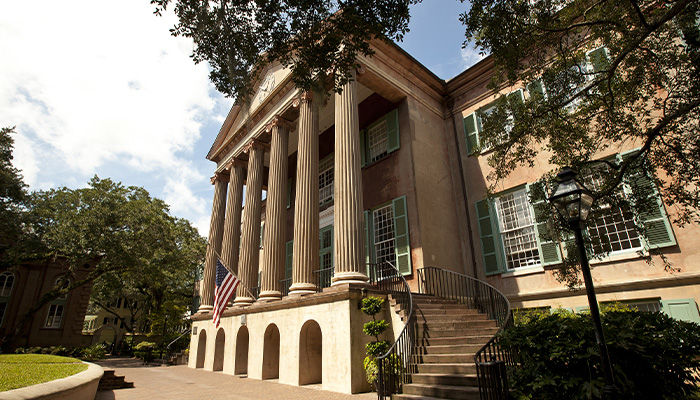
College of Charleston
The College of Charleston majestically stands as a reminder of this city’s rich history in the heart of the historic district. This public college founded in 1770 holds the title of oldest college or university in all of South Carolina.
READ MORE
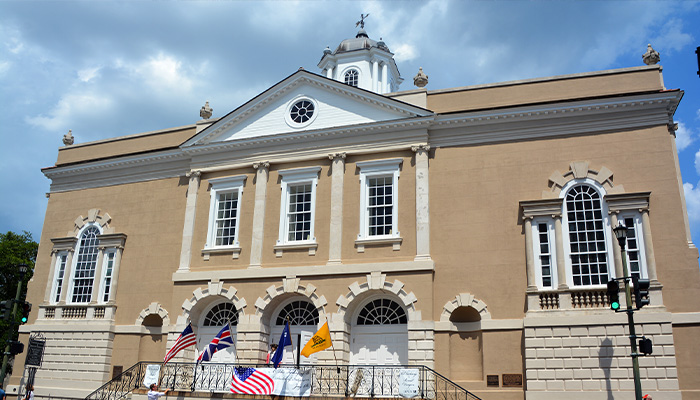
Old Exchange Building
Charleston is an old city with a vast history and over 1400 historic places of interest but it is hard to beat the Old Exchange Building in a competition for the most interesting and varied history in the city.
READ MORE
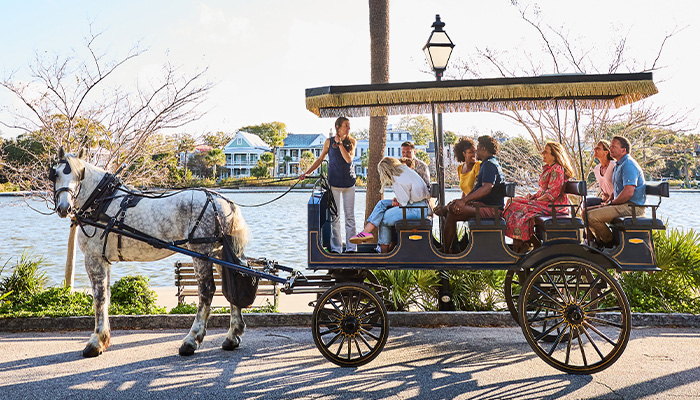
Colonial Lake
You might be wondering why a lake and lakeside park are part of a historical carriage tour in a city filled with historical architecture. Colonial Lake just happens to have a story and rich history all its own.
READ MORE
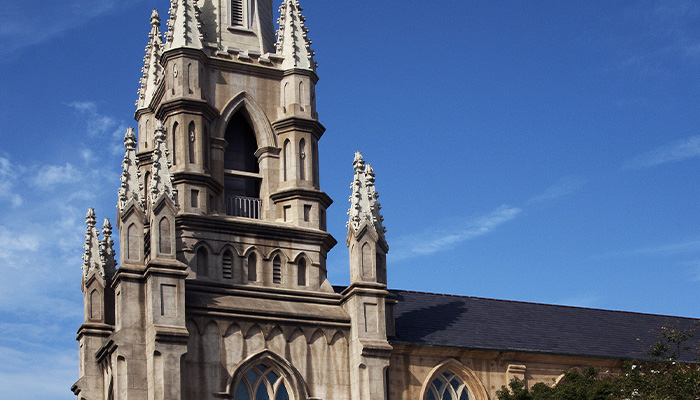
Grace Episcopal Church
Charleston is a charming southern city dating back to the 1600s with a rich history which is partially evident in the many grand, historical churches that dot the city. One of these churches is the Grace Episcopal Church, standing tall as a perfect example of Gothic Revival architecture in the city.
READ MORE

Miles Brewton House
On 27 King Street in Charleston South Carolina you will find one of the most admired colonial townhouses in the historic district.
READ MORE
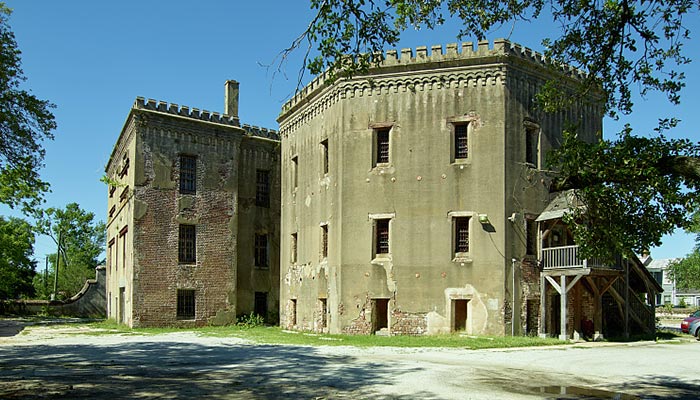
Old City Jail
In the heart of the historic district, the oldest part of Charleston, sits the Old City Jail. The Old City Jail was home to some of Charleston’s most famous criminals.
READ MORE
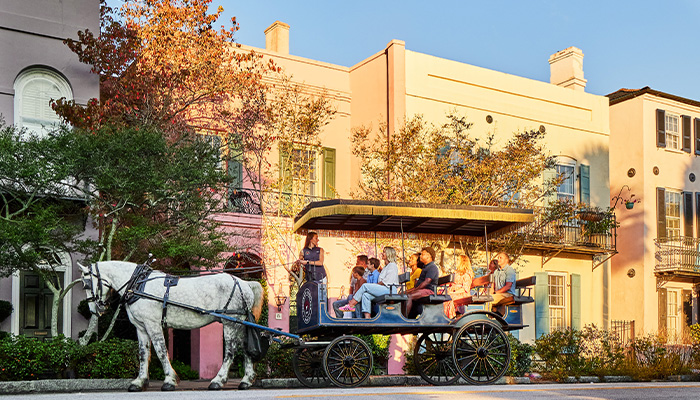
Rainbow Row
Rainbow Row just may be the most photographed area of historic Charleston. This charming row of colorful historic homes is a major tourist attraction and a perfect example of the old row houses that were very distinctly Charleston.
READ MORE
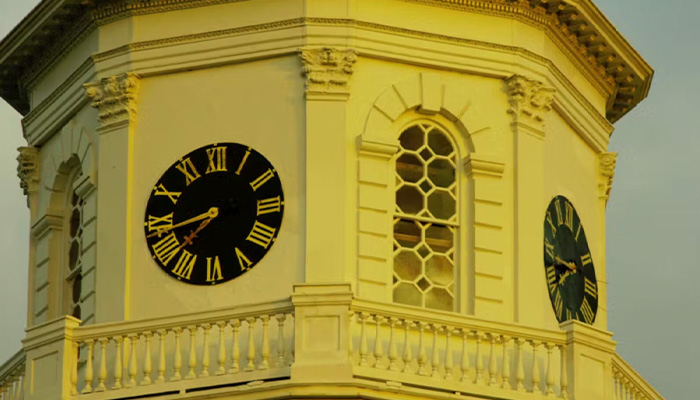
St. Michael's Church
Palmetto Carriage Works® charming carriage tours stop at one of the most historical buildings in the city. St. Michael’s Episcopal Church is the oldest church building in Charleston, built on the original site of the first Anglican Church south of Virginia.
READ MORE
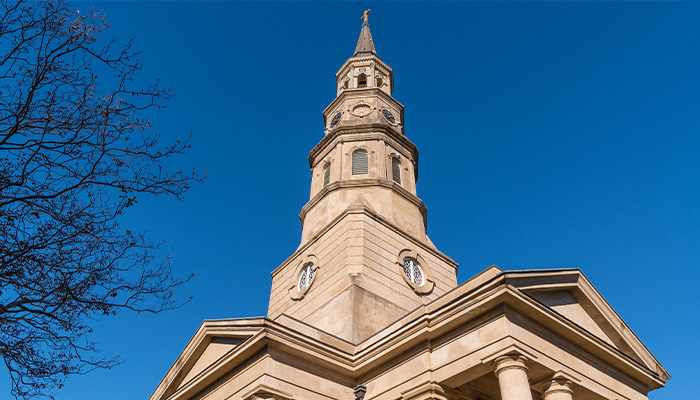
St. Philip's Church
St. Philips Church founded in 1680 is just one of many old churches in Charleston South Carolina and the oldest congregation in the state. South of the Virginia state line it is known as the oldest Anglican congregation.
READ MORE
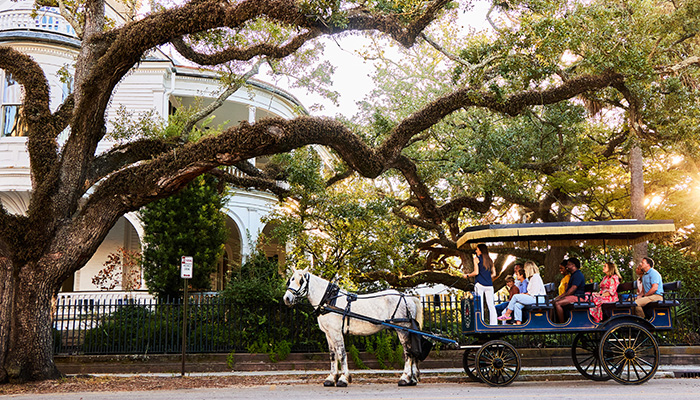
Two Meeting Street Inn
In historic downtown Charleston, situated in the heart of the desirable South of Broad neighborhood, is quite possibly the most recognized Bed and Breakfast in Charleston and one of the most romantic destinations in the country.
READ MORE
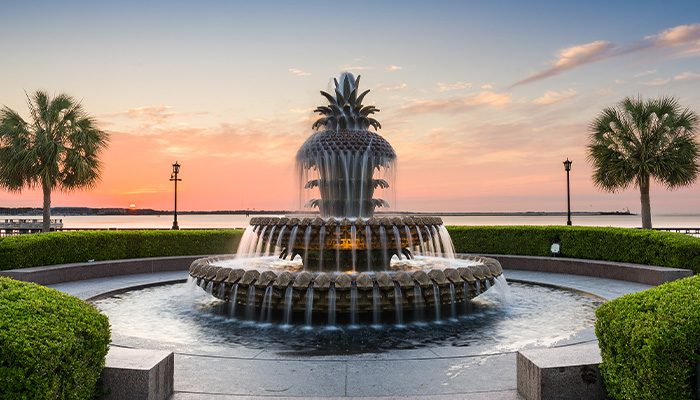
Waterfront Park
Looking at Waterfront Park now, you would never guess that not so long ago in the history of Charleston, this once bustling area had declined to the point that it was almost unrecognizable as the busy section of harbor that it once was.
READ MORE
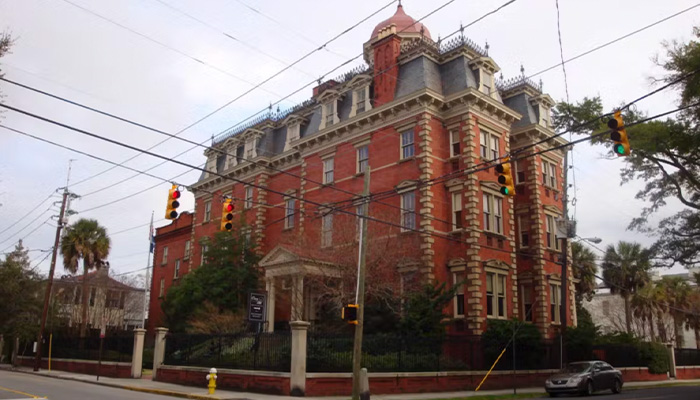
Wentworth Mansion
Historic Charleston is known for its grand historical architecture but some have called this mansion in the heart of the historic district “the finest home in all of Charleston.”
READ MORE
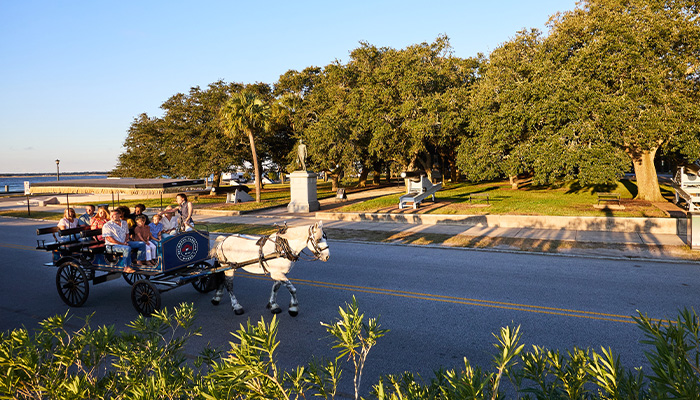
White Point Gardens
In the heart of the Charleston historic district is a piece of history with roots going back to the early 18th century. It was the site of colonial style justice in the 1720s and played a part in the civil war. Today, White Point Garden is a charming waterfront park located right on the Charleston Battery.
READ MORE
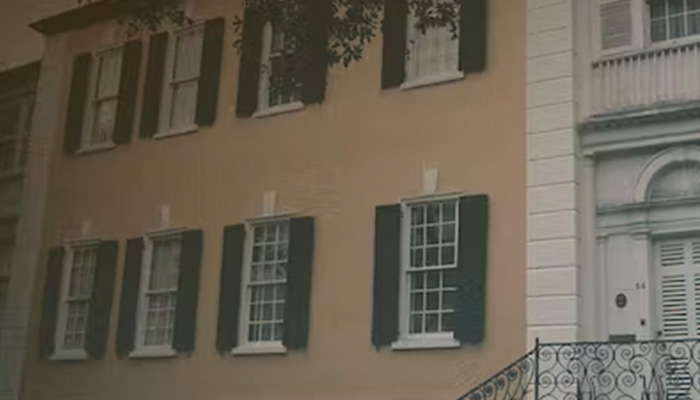
William Rhett House
The William Rhett House is considered one of the oldest houses in historic Charleston and was one of the first of its kind to be restored back to its original grandeur.
READ MORE
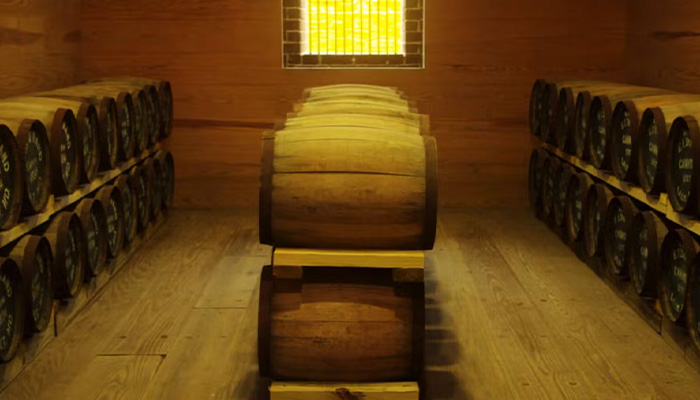
Powder Magazine
The Powder Magazine was built around 1713 just inside the original city walls. The modest structure housed a supply of gunpowder safely away from the civilian population. It is the oldest public building in the southeast.
READ MORE
